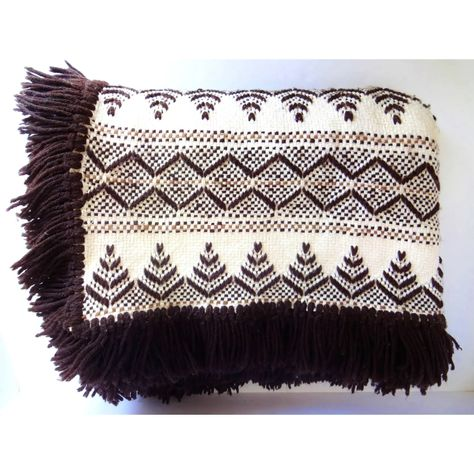Monk’s cloth rug tufting is a fascinating and time-honored craft that has captivated textile enthusiasts for centuries. From its ancient origins to its diverse applications in the modern era, this traditional art form has shaped the world of rugs and textiles. In this article, we invite you to embark on a journey through time as we explore the rich history and various uses of monk’s cloth rug tufting. Get ready to uncover the origins, evolution, and versatility of this remarkable craft.
What Is Monk’s Cloth Rug Tufting
Monk’s cloth rug tufting is a type of rug making technique that involves using a fabric called monk’s cloth as a base and a tufting gun to tuft loops of yarn through the cloth to create a rug. The tufting gun is a hand-held tool that allows the user to quickly and easily insert yarn into the fabric, creating loops that can be trimmed to create a soft, plush pile. Monk’s cloth is a durable fabric that stands up well in the tufting process and is commonly used for creating rugs, wall hangings, and other decorative items. This technique has become popular in recent years as a fun and creative way to make unique, handmade rugs and other textiles.

Origins Of Monk’s Cloth Rug Tufting
Ancient roots and early forms of rug making
Rugs have been an integral part of human civilization for thousands of years. The roots of rug making can be traced back to ancient civilizations, where early forms of weaving and knotting techniques were employed to create functional floor coverings. These early rugs served practical purposes, providing warmth, comfort, and protection against the elements.
Emergence of tufting techniques
One significant milestone in the evolution of rug-making was the emergence of tufting techniques. Tufting involves the creation of loops or piles of yarn through a fabric base, resulting in a plush and textured surface. Monk’s cloth, a durable and loosely woven fabric, became the preferred material for tufting due to its strength and ability to hold the yarn securely.
Influence of different cultures and regions
As rug making spread across different cultures and regions, unique styles and techniques developed. Monk’s cloth rug tufting found its place in various traditions, including Scandinavian rug making, where it became synonymous with the iconic “rya” rugs. These rugs featured long, fluffy piles that added a cozy and luxurious touch to interiors.
Historical Significance And Cultural Heritage
Symbolism and Meaning in Monk’s cloth rugs
Monk’s cloth rugs hold symbolic significance in many cultures. They often feature intricate patterns and motifs that carry deep meanings. For example, in some cultures, specific geometric patterns represent protection, fertility, or spiritual beliefs. These rugs not only adorned living spaces but also served as storytellers, conveying cultural narratives and traditions.
Ritual and ceremonial uses
In certain cultures, monk’s cloth rugs played an essential role in rituals and ceremonies. They were used as prayer mats, wedding gifts, or ceremonial coverings. The craftsmanship and artistic value of these rugs elevated them to revered objects, symbolizing heritage and cultural identity.
Preservation of cultural identity
Monk’s cloth rug tufting has played a vital role in preserving cultural identity. As the craft passed down through generations, it became a way for communities to connect with their roots and maintain their traditional practices. Today, these rugs serve as tangible representations of cultural heritage, reflecting the artistry and craftsmanship of their creators.
Development And Evolution Of The Craft
Transition from functional to decorative rugs
Over time, the function of monk’s cloth rugs expanded beyond mere utility. As societies evolved and design aesthetics changed, rugs transformed into decorative pieces that added beauty and character to interiors. The versatility of monk’s cloth tufting allowed for the creation of intricate patterns, vibrant colors, and unique textures, making these rugs highly sought after as artistic expressions.
Innovations in tufting techniques and tools
Advancements in tufting techniques and tools have further pushed the boundaries of monk’s cloth rug tufting. Modern rug tufting machines and specialized tools have made the process more efficient and accessible, enabling artisans to experiment with different yarn types, pile heights, and design possibilities. This marriage of traditional craftsmanship and contemporary innovation has breathed new life into the art of monk’s cloth rug tufting.
Conclusion
As the exploration of monk’s cloth rug tufting comes to an end, readers are invited to appreciate the time-honored craft. The ancient roots and modern adaptations of this art form continue to inspire and captivate. Monk’s cloth rugs serve both functional and aesthetic purposes, carrying on the legacy of previous generations while telling stories that remain relevant today.
FAQs
What type of yarn is suitable for monk’s cloth rug tufting?
Various types of yarn can be used for monk’s cloth rug tufting, including wool, acrylic, and cotton. The choice of yarn depends on factors such as desired texture, durability, and personal preference.
Are there any specific patterns associated with monk’s cloth rugs?
While there are traditional patterns associated with monk’s cloth rugs, such as geometric or floral motifs, there is also ample room for creativity and personalization. Many artisans enjoy experimenting with their designs, incorporating elements that reflect their artistic vision.
Can monk’s cloth rugs be used in modern interior design?
Absolutely! Monk’s cloth rugs bring a touch of warmth, texture, and visual interest to modern interior spaces. Their versatility allows them to complement various design styles, from minimalist to bohemian, adding a cozy and artistic element to any room.
How can I care for and maintain a monk’s cloth rug?
To care for a monk’s cloth rug, regular vacuuming or shaking out the rug to remove loose dirt and debris is recommended. If spills occur, prompt spot cleaning with a gentle detergent and blotting the area with a clean cloth can help prevent stains. It’s also advisable to avoid placing heavy furniture directly on the rug to prevent crushing the pile.
